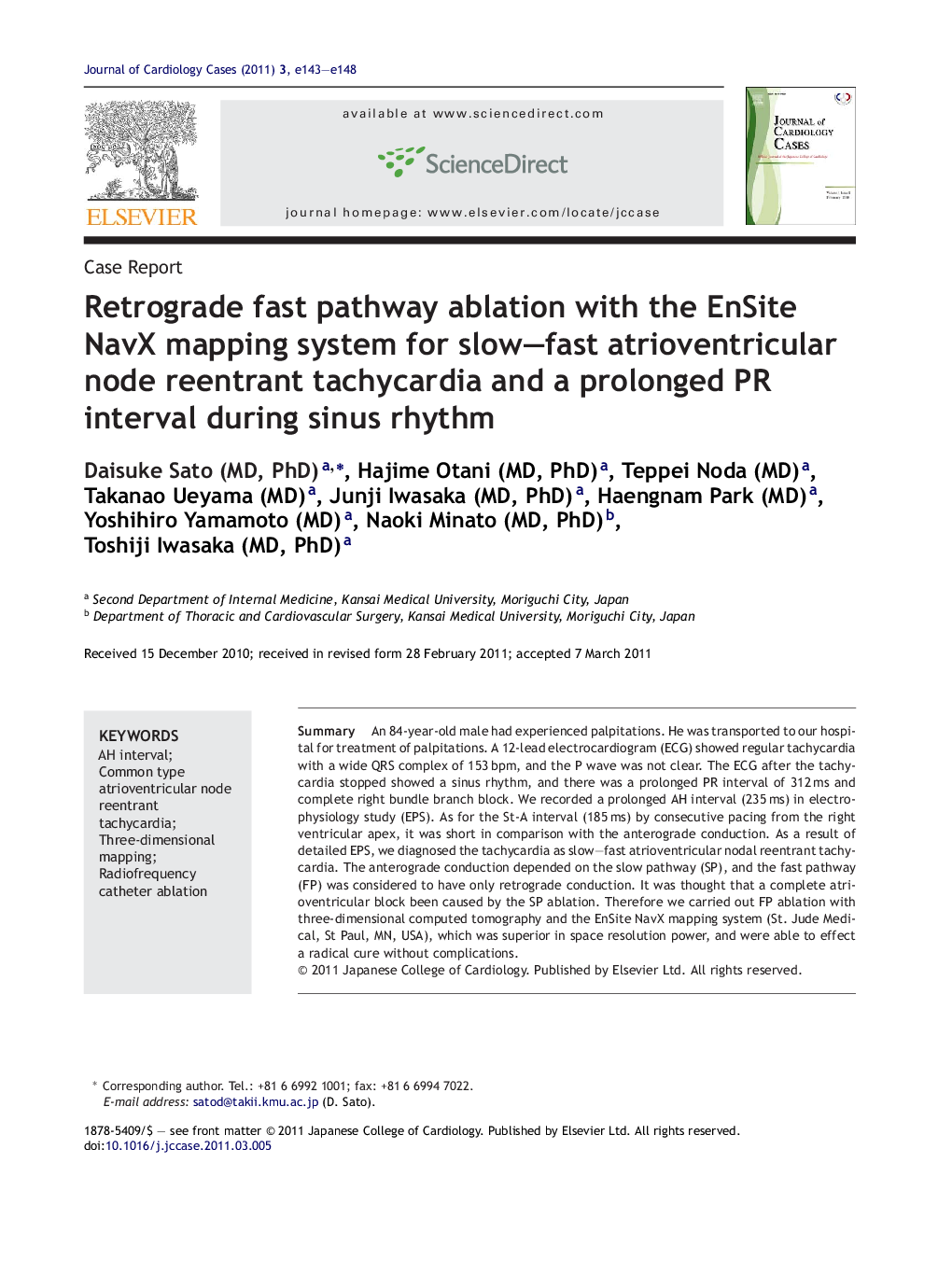| Article ID | Journal | Published Year | Pages | File Type |
|---|---|---|---|---|
| 2964155 | Journal of Cardiology Cases | 2011 | 6 Pages |
SummaryAn 84-year-old male had experienced palpitations. He was transported to our hospital for treatment of palpitations. A 12-lead electrocardiogram (ECG) showed regular tachycardia with a wide QRS complex of 153 bpm, and the P wave was not clear. The ECG after the tachycardia stopped showed a sinus rhythm, and there was a prolonged PR interval of 312 ms and complete right bundle branch block. We recorded a prolonged AH interval (235 ms) in electrophysiology study (EPS). As for the St-A interval (185 ms) by consecutive pacing from the right ventricular apex, it was short in comparison with the anterograde conduction. As a result of detailed EPS, we diagnosed the tachycardia as slow–fast atrioventricular nodal reentrant tachycardia. The anterograde conduction depended on the slow pathway (SP), and the fast pathway (FP) was considered to have only retrograde conduction. It was thought that a complete atrioventricular block been caused by the SP ablation. Therefore we carried out FP ablation with three-dimensional computed tomography and the EnSite NavX mapping system (St. Jude Medical, St Paul, MN, USA), which was superior in space resolution power, and were able to effect a radical cure without complications.
